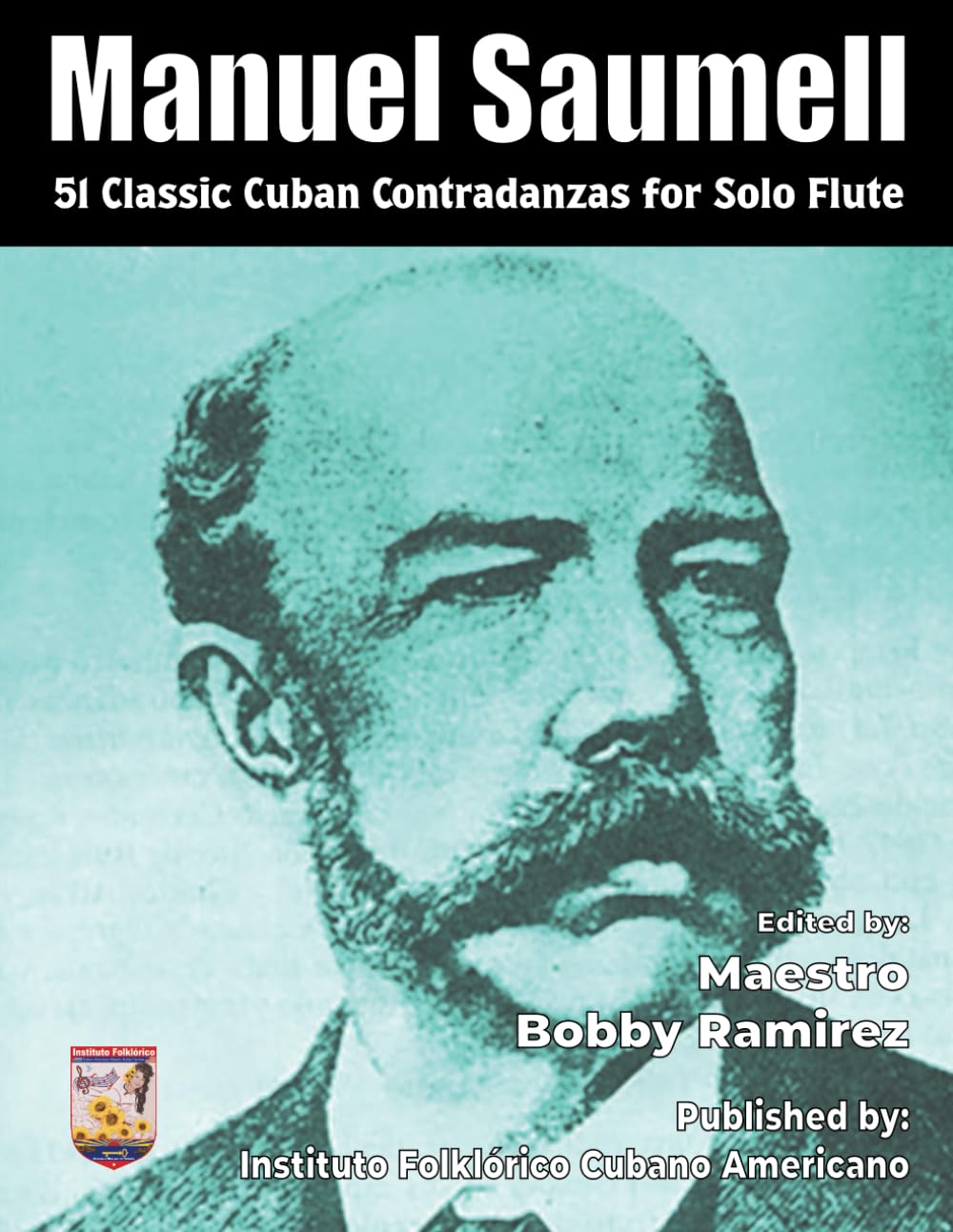
Manuel Saumell 51 Classic Cuban Contradanzas for Solo Flute
$25.00
This book presents the musical compositions of Cuban composer and pianist, Manuel Saumell, 51 Classic Cuban Contradanzas for Solo Flute transcribed, edited and performed by Cuban-American flutist, Maestro Bobby Ramirez.
Saumell’s Cuban creole contradanzas are masterful works were originally composed for solo piano some time during the middle of the 19th century. The book also contains various informative articles including: a biography of Manuel Saumell; Rhythms of Cuba in the XIX Century; The Genealogy of the Danzón; and What is the contradanza or contredanse?; as well as Glossary of Cuban Music Terms; List of Cuban Instruments, and List of important Cuban Musicians.
The contradanza was originally called contredanse or country-dance which originated in England; from there it migrated to France and the rest of Europe. Later it began to arrive in Cuba with the Spaniards in the 17th century. But it was not until the French colonialists migrated to Cuba in the late 18th Century and beginning of the 19th Century that the Country-dance began to flourish especially in the eastern part of Cuba where the French mostly settled. Soon thereafter the contredanse began to go through creolization which is the process of blending different cultures or languages to create a new culture or language; thus, it became known in Cuba as Contradanza. This process was made possible by blending the pure Cuban genre called habanera, which was originally a genre related to dance and purely instrumental. Later around the middle of the 19th Century the contradanza and the habanera began to blend which began to blend to form a new rhythm called, Danzón
Musical genres such as the habanera, contradanza, the danzón, the changui and of course the Cuban danzas of Ignacio Cervantes are the synthesis of 19th century Cuban music and the starting point of all 20th century Cuban music.
“Manuel Saumell Robredo's Contradanzas represent the Creole classicism of Cuban music. The Dances of Ignacio Cervantes represent the romantic creoleism of Cuban music”, Cervantes: 40 Dances. Foundation of “Ediciones De Blanck”
"After Saumell's visionary work, all that was left to do was to develop his innovations, all of which profoundly influenced the history of Cuban nationalist musical movements." Helio Orovio
"The most important [Cuban] musician of the [19th] century was Manuel Saumell Robredo" Diaz Ayala, Cristobal
Language : English
Paperback : 91 pages
Item Weight : 10.6 ounces
Dimensions : 8.5 x 0.22 x 11 inches
Maestro Ramirez Publishing
Explore our collection of captivating published works.
Contact:
© 2025. All rights reserved.
Email:
